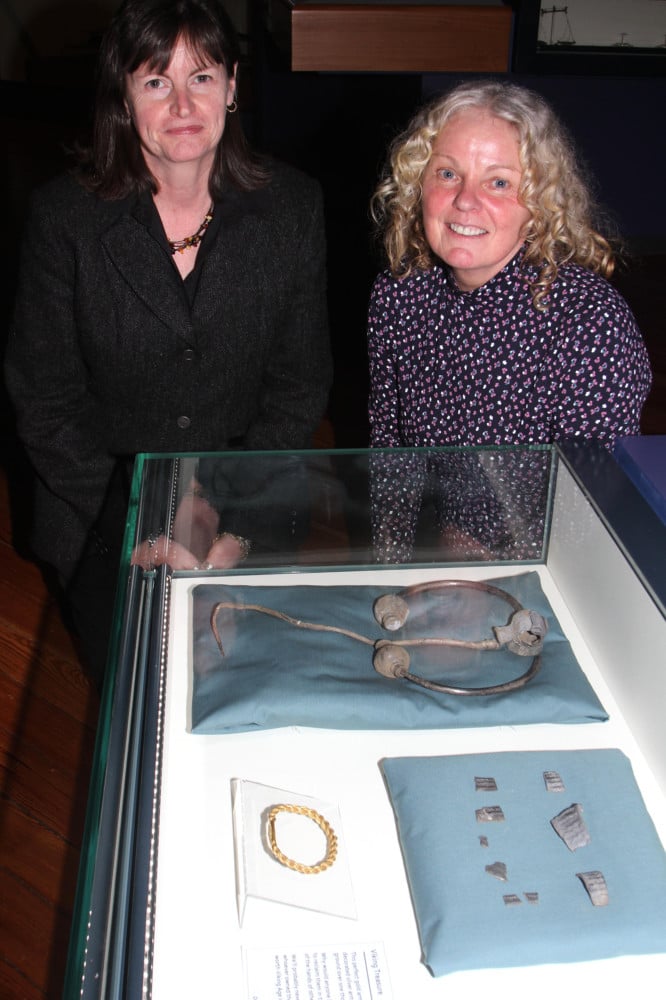An internationally significant treasure trove of Viking artefacts have been discovered.
The special find consists of a gold arm-ring, a large silver brooch, at least one silver armband and other associated finds, buried around 950 AD.
They were discovered in December 2020 by metal detectorist Kath Giles while searching on private land in the north of the island.
A treasure inquest was held Thursday with High Bailiff Jayne Hughes as coroner of inquests.
Mrs Hughes heard that Ms Giles discovered the items in soil after hearing a low grunting noise from her metal detector, which indicated there was iron underground.
Ms Giles had been detecting in the field for two hours when she heard a very good signal, which had located a silver thistle head.
This turned out to be a Viking-period thistle brooch, which was near to a silver armband.
She also discovered a gold arm ring and associated finds such as bits of bone, part of a leather strap, copper alloy, iron, and wood.
The gold arm ring is believed to be 90% pure gold and is made from three plaited rods of gold, both ends merging into a flat lozenge-shaped band that has been decorated all over with a stamped design of groups of three dots.
It’s believed that in Viking times it would have been worth 900 silver coins, according to Manx National Heritage curator Allison Fox. She explained how Ms Giles contacted MNH the following day about her findings, leading archeologists, including Miss Fox, to search the area more thoroughly.
Miss Fox informed Mrs Hughes that the gold arm ring and thistle brooch were the first of their type to be found on the island and that it indicated there would have been trade for gold during this period in Viking history, and the silver brooch was also possibly made on-island.
Miss Fox also said that as the hoard was found together, it suggested the wealthy owner was under threat and so hid their valuables in fear.
The silver brooch is a type known as a ’thistle brooch of ball type’, with a 20cm diameter and the pin 50cm long. Although bent and broken and with just some small pieces missing, the brooch is complete.
It would have been worn at the shoulder to hold heavy clothing such as a cloak in place, with the point of the pin upwards. It is one of the largest examples of its type ever discovered and as with the arm-ring, the brooch would have been an immediate visual indicator of the wealth of the owner.
The items were declared treasures at the end of the inquest and the ’Kath Giles hoard’ are now on display in the Viking and Medieval Gallery at the Manx Museum prior to valuation.
Ms Giles said: ’I’m so thrilled to have found artefacts that are not only so important, but so beautiful!’
MNH said the location of the find and details of the landowner would remain confidential to protect the integrity of the find site.
The silver thistle brooch would have been an immediate visual indicator of the wealth of the owner.


.png?width=209&height=140&crop=209:145,smart&quality=75)


Comments
This article has no comments yet. Be the first to leave a comment.